speakers
2014
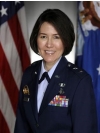
Maj. Gen. Sharon K. G. Dunbar is dual-hatted as Commander of the Air Force District of Washington and the 320th Air Expeditionary Wing, headquartered at Joint Base Andrews. AFDW is the Air Force component to the Joint Forces Headquarters-National Capital Region and is responsible for organizing, training and equipping combat forces for aerospace expeditionary forces, homeland operations, civil support, national special security events and ceremonial events. AFDW also provides major command-level support for 60,000 military and civilian personnel assigned worldwide. As commander, Dunbar is the Uniform Code of Military Justice authority for 40,000 Airmen. Dunbar was commissioned in 1982 upon graduation from the U.S. Air Force Academy. She has served in a variety of acquisition, political-military and personnel positions. Her commands include a mission support squadron, Air Force Basic Military Training, an air base wing, and AFDW. Prior to her current assignment, Dunbar served as Director of Force Management Policy, Deputy Chief of Staff for Man power, Personnel and Services, Headquarters U.S. Air Force, D.C.
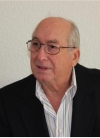
Cesare Frustaci was born in 1936 in Naples, Italy to famous Italian Catholic Orchestra Director and Music Composer Pasquale Frustaci and famous Hungarian Jewish Ballerina Margit Wolf. Since Margit was originally from Hungary, she took her two year old son, Cesare, to Budapest to live with her family because of the decree. Due to the separation from his wife, Pasquale wrote the song “Tu Solamente Tu” (You Only You) that was recorded by Italian Movie Director Vittorio de Sica in 1939, which made de Sica famous throughout the world. His mother instructed him to tell anyone who asked that he was an Italian Catholic. He was seven years old. She gave him a pillow and her last morsel of bread. Cesare hid in a playground at first, but had to learn how to survive the streets. He was eventually sent to an orphanage run by Jesuits.
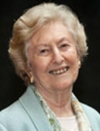
Irene Fogel Weiss was born in 1930 in Botragy Czechoslovakia (now Batrad Ukraine). When Nazi Germany took over in 1939, Botragy came under Hungarian rule. In April 1944, the Jews in the region were sent to a brick factory/ghetto. There, all girls under 16 were ordered to have their heads shaved. Although Irene was only 13, the scarf covering her bald head disguised her young age and saved her from the later selection at Auschwitz-Birkenau. In May 1944, her family were deported from Hungary to Auschwitz-Birkenau. Irene's parents and four siblings were killed. In January 1945, Irene, her sister, Serena, aunts Piri and Rose, were forced on a death march into Germany and survived two more concentration camps. Piri was killed. Irene, Serena, and Rose made their way to Prague to look for relatives. Irene and Serena were the only surviving children.
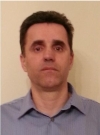
Sead Okić was born in 1962 in Prijedor, Bosnia and Herzegovina (then part of Yugoslavia). On February 29, 1992, Bosnia and Herzegovina declared its independence. War soon broke out across the country, along with the ethnic cleansing of the Bosnian Muslim population, especially in Eastern Bosnia. When the war started in 1992, Sead was married to Fadila. When Prijedor was attacked by the Serbs, all of the men were separated from the women, and Sead was taken to Concentration Camp Omarska, a death camp. In late 1992, Sead Okić and Fadila left Prijedor with their newborn son for Croatia. Later, he immigrated to the United States with his family and now lives in Glenville, Illinois, a suburb of Chicago. He witnessed torture, killings, starvation and humiliation; this experience has left deep traumatic impact for him.
2013
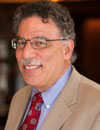
Dr. Peter Black is Senior Historian and Director of the Division of the Senior Historian at the United States Holocaust Memorial Museum. Before joining the staff at the United States Holocaust Memorial Museum in 1997, Dr. Black was a Staff Historian and later Chief Historian for the Office of Special Investigations (OSI), Criminal Division of the United States Department of Justice. OSI was charged with the mission of investigating and litigating against persons alleged to have participated in the persecution of individuals on the basis of race, religion, national origin, and political opinion under the auspices of Nazi Germany. Dr. Black has held various teaching positions at George Mason University, Catholic University, American University and Columbia University. He received his B.A. from the University of Wisconsin (Madison) in 1972 and his Ph.D. in History from Columbia University in 1981.
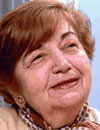
She was born in 1930 in Lom u Mostu, Czechoslovakia in a Jewish family. She fled with her mother and sister to Prague in 1938 after the German Nazis invaded and had let her father, Max Stein, disappear after the incidents of “Reichskristallnacht,” which was similar to Kristallnacht. 300 Nazis had smashed the Stein’s house to bits. From Prague, their emigration to the United States failed in 1939. Together with her mother, grandmother, her uncle and her sister, Ela was deported to Theresienstadt in February 1942. She performed the role of the cat in the Hans Krasa’s children's opera “Brundibár” at the concentration camp. From 1942 to 1943, Ela played the role in 55 performances. She is one of the few remaining cast members alive from Brundibár, which has been performed on Broadway and throughout the world over the years. Reports had begun circulating in Allied capitals that the Nazis were exterminating Jews. The Nazis wanted to refute those reports, so they took Theresienstadt and turned it, if ever so briefly, into a model town. They shot a movie there to prove how good they treated the Jews and invited the Red Cross to inspect it. Central to the deception was the performance of a children's opera called "Brundibár."

She was born in 1934 in Kippenheim, a village in South-Western Germany, as an only child to Jewish parents. Berthold and Regina Auerbacher lived in a large house in Kippenheim where Inge’s father was a textile merchant. Inge’s maternal grandparents came to visit in November 1938 when Kristallnacht (The Night of Broken Glass) occurred. Inge remembers that day because all of the windows in their house were broken by the mob. Her grandfather and father were arrested and sent to the Dachau concentration camp in Germany. In 1939, Inge’s parents sold their house and moved several hundred miles away to live with her grandparents in the German town of Jebenhausen. However, Inge and her parents were deported from their town in August, 1942. She was seven years old; the youngest in a transport of about twelve hundred people. Their destination was the Theresienstadt concentration camp in Czechoslovakia. She arrived clutching her beloved doll, Marlene. Of the 15,000 children imprisoned in Theresienstadt, Inge is among the very few that survived. After three long years, liberation came by the Soviet Army on May 8, 1945. Inge was 10 years old at the time. Miraculously, Inge and both her parents survived, but their many relatives did not. Marlene, Inge’s beloved doll also made it through the terrible times. However, most of Inge’s friends at Theresienstadt died in the gas chambers at Auschwitz. Inge was stricken with tuberculosis caused by years of malnutrition in the concentration camp. She was hospitalized for two years and fought a valiant battle for many years to regain her strength. In 2009, Inge Auerbacher and Bozenna Urbanowitz Gilbride, a Polish Catholic Holocaust survivor, wrote the book “Children of Terror.” It is the first Holocaust book written by both a Jewish and a Catholic Holocaust survivor. Inge is also the author of five other books, among them the classic "I Am A Star."
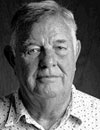
He was born in 1925 in Franklin, Tennessee where he still lives today. At the age of 17 in 1943, Gentry, who had just had a brother killed in Europe, left aboard a U.S. military ship that set sail for France. In 1944, he participated in the Battle of the Bulge (16 December 1944 – 25 January 1945), which was the largest and bloodiest battle that Americans fought in during World War II as the Allies fought eastward. On April 29, 1945, Jimmy Gentry liberated the Dachau concentration camp as a member of the 42nd Rainbow Division of the US Seventh Army along with 45th Division and the 20th Armored Division. Jimmy saw for the first time hundreds of bodies that had been shot and were dead, and they were spilled out of a boxcar. Some of the bodies were still in the train and some were hanging out over the tops of the piles of people outside. That is what Jimmy saw for the first time, and they were not soldiers. When the divisions arrived, they found 42,000 prisoners of war in the camp. Many of them were typhus infected. The German soldiers that were there at liberation were either killed by the Americans or by the prisoners themselves. Jimmy saw a lot of prisoners that day. Many came up to Jimmy to hug him or would fall down on their knees and hug him. The prisoners wanted to show their appreciation for being released.
2012
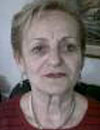
Stefania Kenigswain Sitbon, born in Warsaw, Poland in 1939, is a Jewish woman who was smuggled out of the Warsaw Ghetto and hidden as a baby in the Warsaw Zoo in 1942 by the Director of the Zoo, Jan Zabinski, and his wife, Antonina. They hid 300 Jewish men, women, and children in animal cages of the zoo throughout the German occupation of Warsaw from 1939 to 1945. Many of the zoo's animals were killed by bombing, shot or taken to the Berlin Zoo and thus, many of the zoo's cages were left empty. Although Stefania, her brother, Moshe, and their parents were there for only a couple of months, being hidden in the Warsaw Zoo enabled the family to survive the war. This rescue effort was immortalized in the 2007 best-selling book The Zookeeper's Wife, which is scheduled to be released as a major motion picture in 2013. Stefania Sitbon and her brother, Moshe, are the only survivors of the Warsaw Zoo rescue effort known to be alive today.
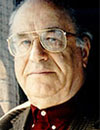
Gerald Schwab was born in Freiburg, Germany in 1925 to Jewish parents. Because of the German Nazi government's call for a boycott of Jewish businesses in 1933, David and Paula Schwab, Gerald's parents, moved their family to St. Louis, France. David owned a wholesale plumbing business in Germany and Switzerland. After two years in France, conducting business became difficult since his father was not a French citizen. Thus, the Schwab family moved back to Germany. In November 1938, after Kristallnacht (Night of Broken Glass), Gerald Schwab was kicked out of school and David Schwab was picked up by the Gestapo (German Secret Police) and imprisoned in Dachau concentration camp. Fortunately, David was released two months later. In 1940, the entire Schwab family received their visas and came to the United States. In 1944, Gerald Schwab was sent to Europe and fought under the 10th Mountain Division of the U.S. Army. In 1946, he was discharged and became a translator of documents and a language interpreter at the Nuremberg Trials. Gerald Schwab is one of the few remaining individuals in the United States alive today who was connected with the Nuremberg Trials.
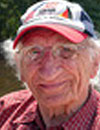
Ernst Floeter was born in 1925 in Stettin, Germany (now Szczecin, Poland). While growing up, he observed Adolf Hitler and the Nazi takeover of the German government in 1933 and lived under the Nazi regime until 1943. Ernst remembers two Jewish classmates, and his family knew about two concentration camps, Sachausen and Dachau while the Nazi government was in power. Like all German children, Ernst was forced to join the Hitler Youth Corps in 1935. He later witnessed Kristallnacht in 1938 and saw what happened that night and the next morning to the Jewish residents of Stettin. A Jewish family who lived above Ernst and his family were later sent to Theresienstadt concentration camp where they perished except for their one son. After World War II, the neighbor's son immigrated to the U.S. and settled in Pittsburgh, Pennsylvania.
2011
.jpg)
She was born in 1934 on a farm near Leonowska, Poland (now in Ukraine). In September 1939, the Soviet Union invaded and incorporated eastern Poland, including Bozenna’s village. The Urbanowicz’s farm was made part of a collective under the Soviet communist government. Bozenna’s father hid Jews in his shed during this period. In 1943, the Ukrainian Nationalist (UPA) collaborated with the Nazis and decided to kill all of the Poles and Jews in her province. To survive, all of people who lived in the area were on the lookout all day and slept in their fields. Finally, the area’s homes were set ablaze and people left the area. Bozenna and her family were shipped to Freiberg, Germany where they were ordered to work in a tannery to make leather goods for the German war effort. In 1944, the Germans relocated Bozenna’s family to Chemnitz, Germany to work in the munitions factory. While in Chemnitz, they saw a parade passing with Adolf Hitler in it. The German guards beat Bozenna’s father one day when they discovered a letter that criticized the Germans about how they treated the slave laborers. However, it was written by her mother, and Bozenna’s mother was sent to various concentration camps and survived. In the spring of 1945, the Germans had wagons that dumped the slave laborers on the outskirts of Chemnitz. Bozenna and her family ran into American troops, and she was placed in a Displaced Persons Camp before ending up in the United States. In 2010, Bozenna and Inge Auerbacher, a Jewish woman originally from Germany, wrote the book titled “Children of Terror” Both women talk about how they survived deportation, labor camps, concentration camps, starvation, disease, and isolation.
.jpg)
She was born in Berlin, Germany in 1930. After her father’s bank was Aryanized (taken from him because of its Jewish ownership) and when measures against Jews further increased), Irene’s father moved the Hasenberg family to Amsterdam, Holland in 1937. They became briefly acquainted with the Frank family and their daughter, Anne Frank. After the Germans invaded and took over Holland in 1940, restrictions were implemented against the Dutch Jewish population. Hasenberg’s father initiated efforts to obtain a foreign passport or visa from contacts in Sweden. In 1943, the entire family was sent to Westerbork concentration camp in Holland. After Ecuadoran passports arrived in 1944, the Hasenbergs were sent to Bergen-Belsen concentration camp in Germany. In January 1945, the Hasenberg family was selected to be exchanged for German nationals held in another country and were transported by train to Switzerland. Unfortunately Irene's father died before reaching Switzerland, and she became separated from her mother and brother who were taken to a Swiss hospital for treatment. After ending up in a Displaced Person’s Camp in Algeria, the Hasenberg's relatives in the U.S. sent for Irene in December 1945. Irene’s mother and brother arrived in the U.S. a year later. Irene Hasenberg Butter is formerly a public health professor at the University of Michigan.
.jpg)
He is a Jewish man who was born in 1932 in Berlin, Germany. After Kristallnacht in 1938, his father was caught trying to escape from Germany to Belgium and was imprisoned in Dachau concentration camp. The only way that he could be freed was to leave the country. Thus, in 1939, Sigmund, his father and mother, and family left Naples, Italy for Shanghai on a ship. They lived there for 9 ½ years until they immigrated to the U.S. Sigmund completed his B.A. and M.S. in school psychology from City College of New York and a Ph.D. in clinical psychology from Columbia University. He is now Eminent Research Professor, Department of Educational and Counseling Psychology, University at Albany, State University of New York. In 1988, he returned to Shanghai as a visiting professor at Shanghai Institute of Education where he began writing “Strange Haven: A Jewish Childhood in Wartime Shanghai.”
2010
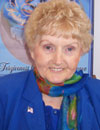
Eva and her sister Miriam (Mickey) were born in northern Romania. In 1944, Nazis transported her immediate family to Auschwitz-Birkenau concentration camp. Because Eva and Miriam were twins, Dr. Mengele selected them to remain alive for experiments. The rest of their family were never heard of again and are believed to have been murdered in the gas chambers. Eva and Miriam remained in Auschwitz for nine months, enduring experimentation such as being injected with potentially lethal strains of bacteria (and not given treatment). After returning to Romania and then moving to Israel, Eva Kor settled down in Terre Haute, Indiana where she lives with her husband. There she created the C.A.N.D.L.E.S Museum (Children of Auschwitz Nazi Deadly Lab Experiment Survivors). The museum is dedicated to education about the Holocaust and operates under the mission to "eliminate hatred and prejudice from our world."
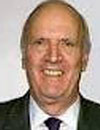
Helmuth Caspar von Moltke, who lives in Hanover, New Hampshire, would talk about his two parents who were a leading part of the German political resistance to the Nazi regime. Helmuth James Graf von Moltke, was hanged in 1945 in Berlin by the Nazis for political resistance and treason, and Freya von Moltke died on January 1, 2010 in Norwich, Vermont. They both obtained law degrees after marrying one another, but Helmuth continued to practice law from his office in Berlin during the 1930’s. He advocated in his capacity as an international lawyer for better treatment of prisoners taken by the German army. Before the war started, he offered his expertise to Jewish families trying to use legal means to salvage what they could of their belongings confiscated by the government and helped them leave the country. Helmuth and Freya ran the Kreisau Circle resistance group from their estate in rural Silesia, which was then German territory and is now part of Poland. The Kreisau Circle consisted of a group of several dozen German intellectuals that participated in discussions of an attempt on Hitler’s life. For moral and practical reasons, Helmuth von Moltke and other members disagreed with the assassination plan, at least initially. Other members supported and ultimately abetted the unsuccessful 1944 bomb plot. Today, the von Moltke’s estate is used as international youth meeting place, which was partially based on a recommendation made by Freya von Moltke herself.
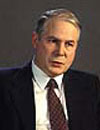
He currently lives in Fairfield, New Jersey and was born in 1937 in Mannheim, Germany. Mr. Wagemann, was brought up as a Jehovah's Witness in Germany and was classified as handicapped (one leg is 6 inches shorter than the other). His mother was a Jehovah’s Witness that was arrested and briefly incarcerated in 1937 due to her religion. She was pregnant at the time with Robert, and they believe that due to the stress and limited prenatal care contributed to Robert’s breech birth and handicap. Twice Robert was targeted for extermination, but his mother hid him after the second attempt in his grandparents’ house after she overheard doctors talking about giving Robert a lethal injection after lunch. He suffered discrimination both as a Jehovah’s Witness and as a handicapped individual while growing up in Nazi Germany.